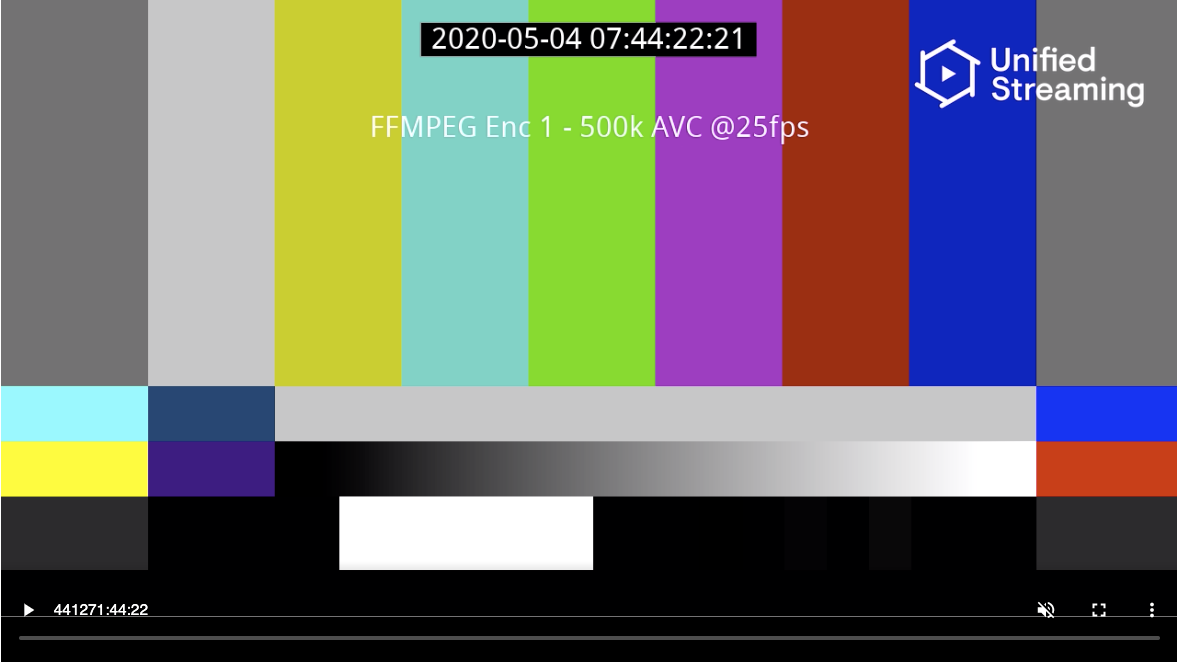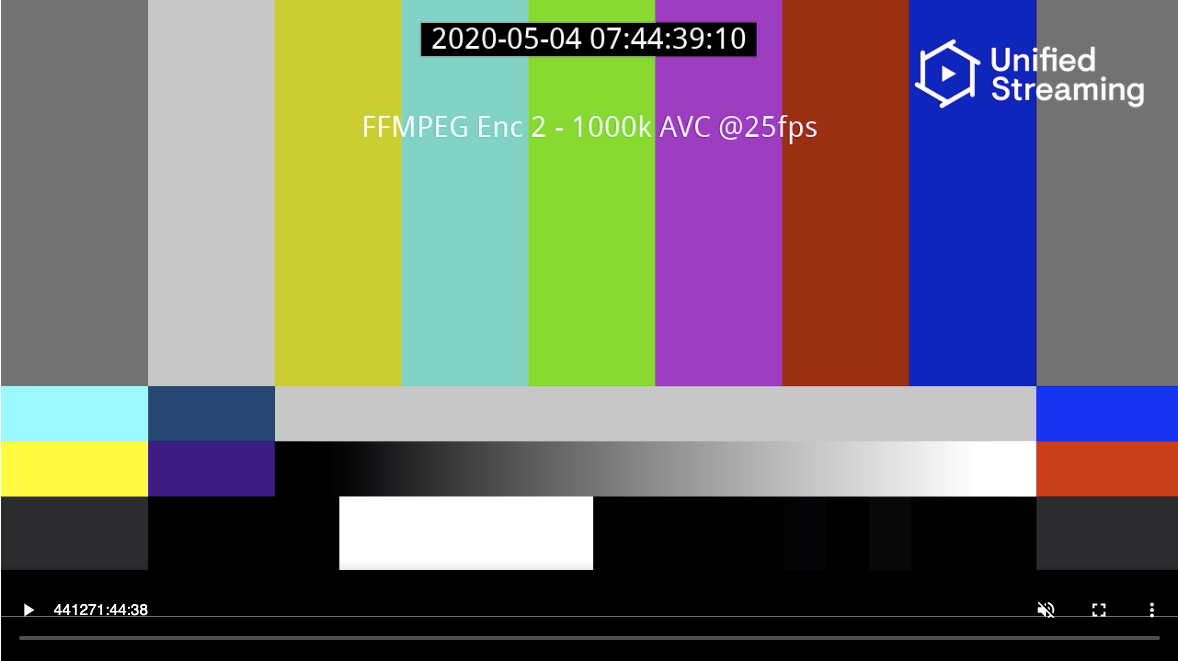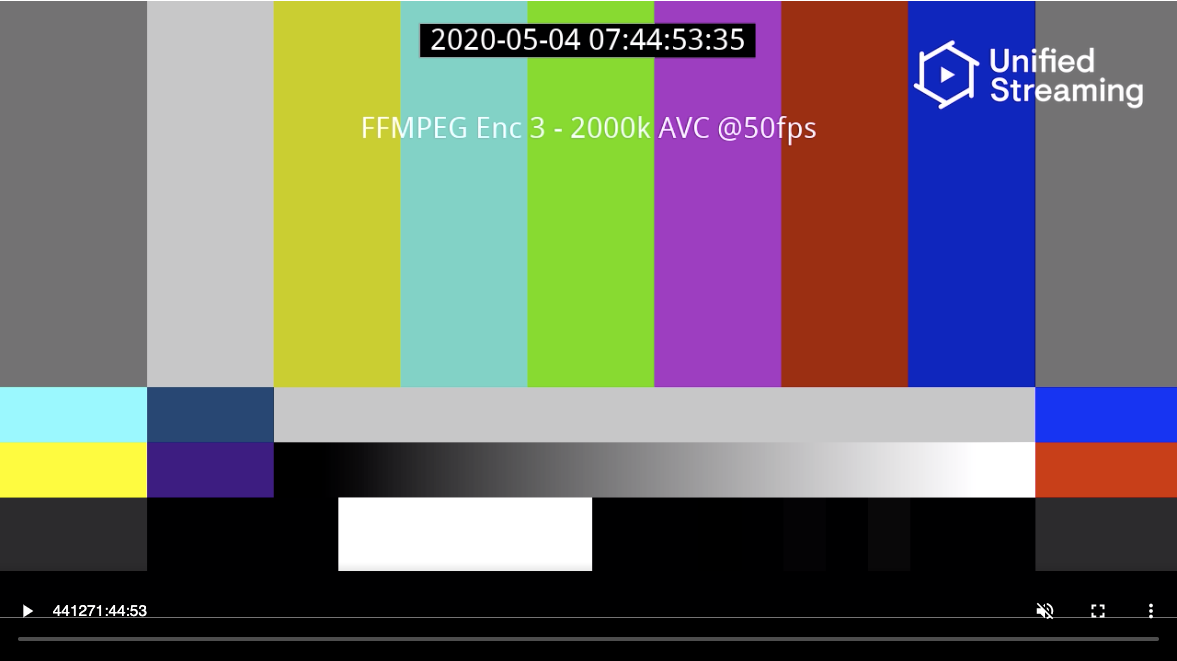This demonstration shows a Unified Streaming Origin setup with a Live publishing point and uses FFmpeg as an encoder to push an input stream.
The demo consists of two Docker containers which are deployed using Docker Compose.
- Install Docker
- Install Docker Compose
- Download this demo's Compose file
As this demonstration requires a patch to add functionality to FFmpeg for improved live streaming the Docker image needs to be built locally.
This can be done by running the following command in the directory of this demo's Compose file:
#!/bin/sh
docker-compose build ffmpeg-enc1
docker-compose build ffmpeg-enc2
docker-compose build ffmpeg-enc3Which will create a Docker image called livedemo_ffmpeg_X with the patch applied.
You need a license key to use this software. To evaluate you can create an account at Unified Streaming Registration.
The license key is passed to containers using the USP_LICENSE_KEY environment variable.
Start the stack using docker-compose:
#!/bin/sh
export USP_LICENSE_KEY=<your_license_key>
docker-compose upYou can also choose to run it in background (detached mode):
#!/bin/sh
export USP_LICENSE_KEY=<your_license_key>
docker-compose up -dNow that the stack is running the live stream should be available in all streaming formats at the following URLs:
| Streaming Format | Playout URL |
|---|---|
| MPEG-DASH | http://localhost/test/test.isml/.mpd |
| HLS | http://localhost/test/test.isml/.m3u8 |
| Microsoft Smooth Streaming | http://localhost/test/test.isml/Manifest |
| Adobe HTTP Dynamic Streaming | http://localhost/test/test.isml/.f4m |
Watching the stream can be done using your player of choice, for example FFplay.
#!/bin/sh
ffplay http://localhost/test/test.isml/.m3u8And it should look something like:


